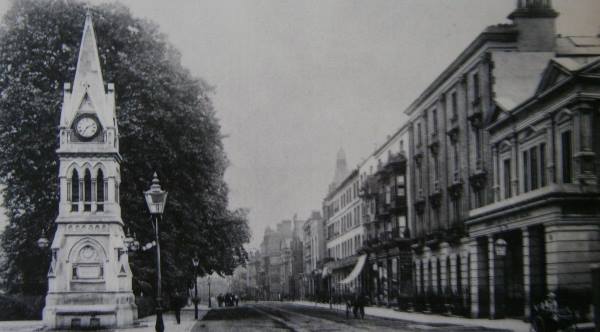The Department of Prints and Drawings in the British Museum is holding an exhibition surveying an important but neglected period of printmaking in Italy. In contrast to the situation in the early sixteenth century, a marked feature of the period 1550-1620 is the mass-production of prints, and the rise of dealers whose publishing activities were characterised by a division of labour and a desire to maximise commercial profitability. Whereas the proto-capitalist aspects of their businesses has interested social and economic historians, print historians have tended to connect these characteristics with a severe decline in quality. However, it is reasonable to now reconsider the issues.
It has proved possible to document more fully than before the way the emerging firms of commercial print dealers operated.
These were men who could finance large-scale production and distribute the works on the international market.
A revealing indicator is the discovery that it was quite common for them to order more than one copperplate of the same image. For instance, the great print dealer, Antonio Lafreri (c.1512-77), who came from Lorraine but spent the whole of his working life in Rome, must have licensed dealers in other centres to make replicas of his plates. Evidence of this is a copy of one of his plates with an Annunciation after the design of Federico Zuccaro (c.1542-1609) which carries his name and also that of the Venetian print dealer Luca Bertelli (active 1564-89). Replica plates were made so that printing could take place simultaneously in different locations: this eliminated the costs of transporting printed paper and also the need to pay the substantial import duties that were levied when goods were moved from one Italian city-state to another.
This discovery was made possible by systematically studying the immense collection of unmounted prints in the British Museum collections – especially the copies and the impressions from re-cut plates that are not normally examined carefully. Several very clear examples of licensed replicas emerged, and once alerted to the practice, it became clear that it could explain many other copies, which had previously been understood as illegal, pirated productions.
But although the innovative commercial aspects of this kind of print business is thus affirmed, it has also been possible to demonstrate that this did not necessarily mean a decline in quality. A large print dealer like Lafreri made sure to have at least some very high quality prints in stock, in order to supply the growing numbers of discriminating clients. Zuccaro, a very important painter at the time, designed the Annunciation that was mentioned above as copied in Venice. The original plate was engraved by the great Netherlandish engraver Cornelis Cort (c.1533-78). It will have caused Lafreri considerable trouble and expense to arrange this.
Lafreri was a figure of the greatest importance. He settled in Rome in around 1544 and began commissioning new plates and buying up old ones. By the time of his death in 1577 he owned an immense stock of plates, which he printed on demand in his workshop in central Rome. Initially he specialised in prints of the monuments of Rome, especially the buildings, sculptures and other remains of the ancient city, whose decayed grandeur so excited the European imagination at this time. But he also had great numbers of maps, religious and secular subject-prints and portraits. In the 1570s he issued a printed stocklist for circulation to clients and potential clients, a pioneering development which was imitated by his competitors and successors. It allowed him to develop mail-order markets for his wares throughout Europe. But however significant were Lafreri and other large-scale print dealers of the time, to characterise the period as dominated by such people is false. A considerable proportion of print production was on a much smaller scale.
It is also well known that many painters took up printmaking so as to earn extra money and also to disseminate knowledge of their work to much wider audiences than would ever be able to see their paintings. They often designed, cut and published their own prints as, for example, Federico Barocci (c.1535-1612), the proto-Baroque artist from Urbino, whose clientele included many of the most powerful people in Europe at that time, and Camillo Procaccini (1555-1629), the Bolognese artist who provided so many religious paintings for the churches of Counter-Reformation Milan. What they produced were few in numbers (Barocci was responsible for only four prints) but highly original and influential.
What has not been clearly understood until now is that the more successful professional printmakers operated on a freelance basis. They entered into short-term contracts to execute particular commissions, but did not become employees of established print dealers. Engravers might initiate work themselves, as Agostino Carracci (1557-1602) did when he worked with Veronese (1528-88) and Tintoretto (1519-94) in Venice in the 1580s. Carracci’s engravings are among the finest works in the exhibition. Or professional printmakers might be hired by artists or designers. For example in the mid-1560s, Cornelis Cort was invited by Titian (c.1490-1576) to live in his house and to work for him. Titian supplied him with drawings and proved himself to be acutely sensitive to the aesthetic possibilities of Cort’s engravings. Thus when he reused a composition that had first been made for some other purpose, Titian altered it so that it would be effective as a print. A case in point is the Martyrdom of St Lawrence of 1571, in which the great swirling clouds of smoke that fill the upper parts of the print have no equivalent in Titian’s earlier paintings of this subject. In the black and white of the engraving the rising smoke creates an extraordinarily effective visual drama.
Cort subsequently went to Rome where he formed similar kinds of relationships with some of the best painters active there. These artists are not very well known today but had an enormous reputation at the time. There was Girolamo Muziano (1532-92), who became prominent through his inventive approach to the composition of landscape, and who worked closely with Cort, having landscape drawings engraved. There was Federico Zuccaro, whose Annunciation has already been mentioned, a controversial but very significant figure, who was later to be the head of the Academy of St Luke in Rome.
And there was Giulio Clovio (1498-1578), the designer and miniaturist, whose exquisite illuminations of luxury manuscripts kept alive in the sixteenth century a great medieval tradition, but using the figural language of Michelangelo.
Clovio designed several religious compositions especially for Cort to engrave.
It was not only painters who made use of print media. Cosmographers often worked closely with engravers and one particularly fine work in the exhibition is a map of South-East Asia. Prints were often used for didactic purposes. A contract found in the Archivio di Stato in Rome reveals fascinating information about one remarkable example: a print that sets out to demonstrate the relations between God, the Universe and Man. In 1580 Andrea Bacci, the Professor of Botany at the University of Rome, commissioned it from the engraver Natale Bonifacio (1537-92), as an ambitious teaching aid. Each morning for an anticipated 40 or 50 days, Bonifacio contracted to go to Bacci’s house where he would be issued with the drawing and copperplate. He undertook to work diligently, transferring the drawing to the plate, returning them each evening to Bacci or his wife. More generally, the whole story indicates how someone from quite outside the ‘art world’ could make use of the varied and lively artisan culture of the print business for their own particular purposes.
The Print in Italy 1550-1620 (until 6 January 2002) draws attention to the variety that characterised the period – on the one hand the variety of subject matter, with examples of portraits, maps, board games and devotional subjects, of didactic and erotic prints and prints reproducing famous works of ancient and modern art and architecture; and on the other hand the variety in the different kinds of producer and in the relations of production. By this means the vitality of the industry and the enterprise of the printmakers and printsellers will emerge. In combination with the fully illustrated catalogue, it should make possible a more balanced and a more positive appreciation of printmaking at this time.



